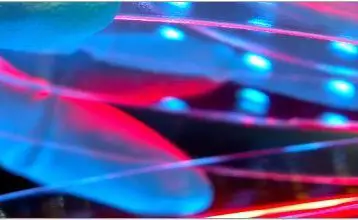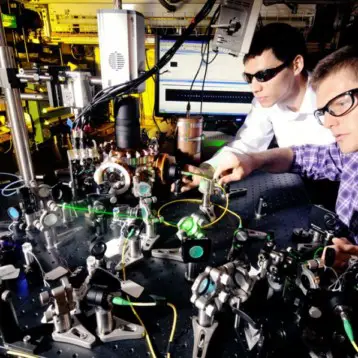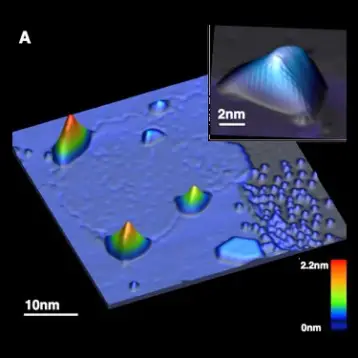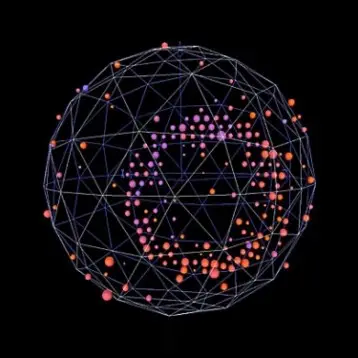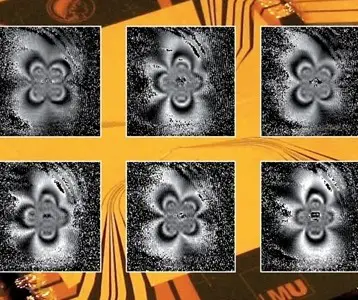|
The semiconductor material used in the ETH experiment was gallium arsenide. The researchers ‘cultivated’ a gallium arsenide crystal, and on top of it they applied two layers of indium-gallium arsenide from which tiny bubbles, the quantum dots, formed. These tiny bubbles grew directly above the first layer. An overview stated by Lucio Robledo, first author of the respective paper published, comments that “This kind of dot is like an artificial atom only bigger, and two superimposed dots constitute an artificial molecule.”
The researchers were also able to verify the number of electrons present in one quantum dot. They were then able to imprison the charged particle in the quantum dot. Each electron acts like a quantum magnet with quantum-mechanical properties, as it has a particular spin, i.e. it rotates in one direction around its axis. For many years researchers has been on the subject of theoretical and experimental quantum physics. The key focus is to acquire a better understanding of the quantum dots’ properties and be able to influence them.
The electron’s spin can be utilized for carrying encoded information. The fundamental building blocks in a normal computer are bits with values of zero or one. However, quanta can entertain both states simultaneously. This means an electron has two unique spin orientations at the same time. The co-author of the study, Jeroen Elzerman, explains that “This is one of the fundamental mysteries of the quantum world.” Furthermore, he states that using the spinning feature of the electron can facilitate numerous computing operations to be executed concurrently, significantly improving a computer’s speed.
To study their semiconductor system, the Quantum Photonics Group’s researchers used two coupled quantum dots, because these preside over one another reciprocally. The scientists controlled these states by excitation with a laser from outside the electron.
|
The team was able to set an electron’s spin state in a specific direction with high reliability, and to read it out again. Their achievement signifies a significant step forward in the ability to optically influence quantum dot spins. However, despite the impressive accomplishment, the team shows is reluctant to acknowledge quantum dots as the most promising path to developing quantum computers because of the substantial amount of the physics that still needs to be deciphered at the nano-scale level. In addition, this development will need to be modelled so that it will be suitable for use in a conventional computer. The researchers will need to find a solution to the challenge facing quantum dots before proceeding to integrate their findings into conventional computers.
TFOT has covered other ‘nano’ topics, such as the use of nano-diamonds in quantum computing by scientists at the University of Melbourne. The Australian scientists used the diamonds’ properties in an attempt to create quantum computers capable of performing parallel computing tasks. A different development concerning quantum computers covered by TFOT is the first “demonstration” of D-Wave’s 28-Qubit Quantum Computer. Quantum Computing in general is covered in Dr. Boaz Tamir’s column.
Additional information on the Quantum Photonics Group Project can be found on the ETH Life website.





